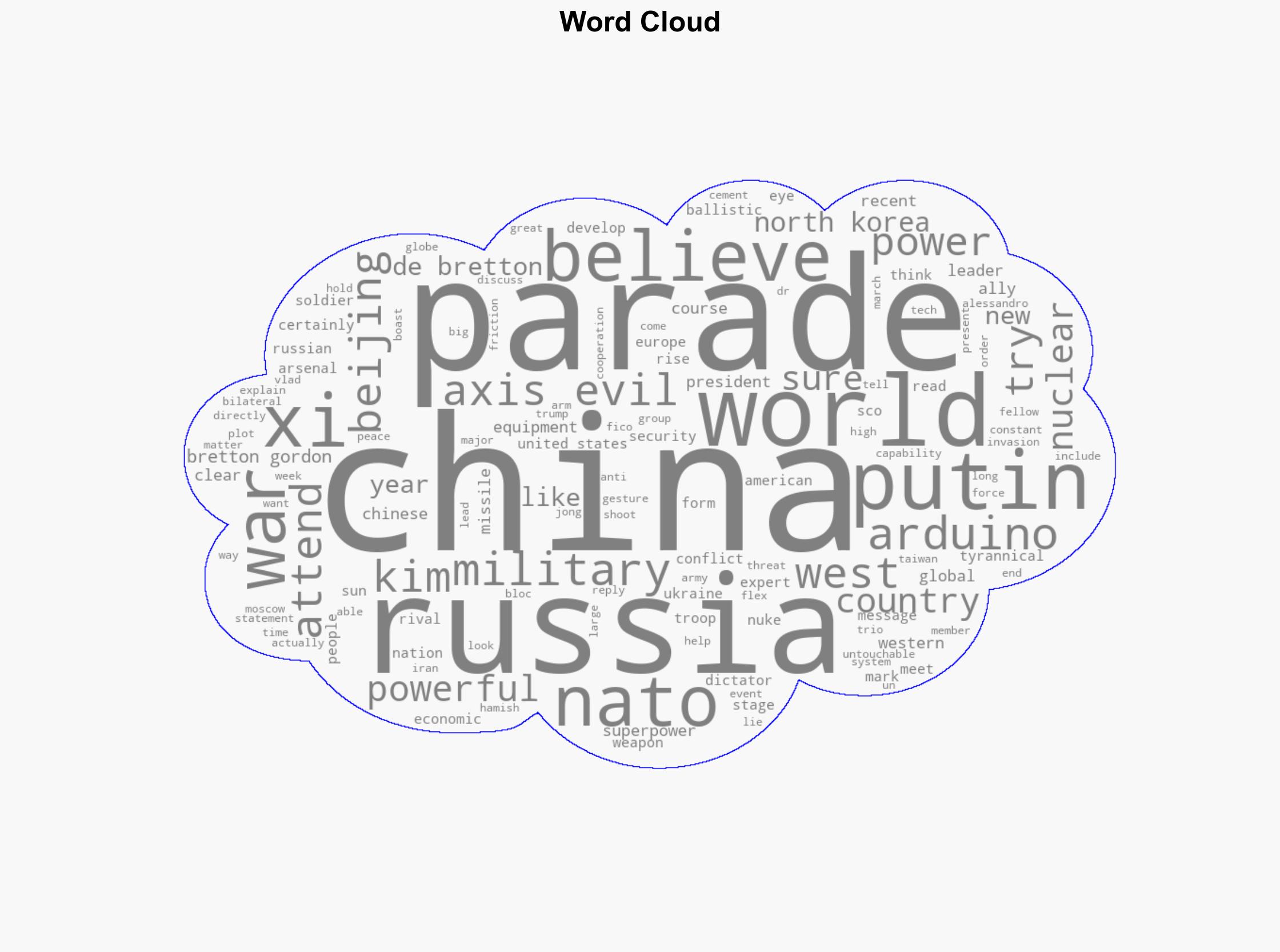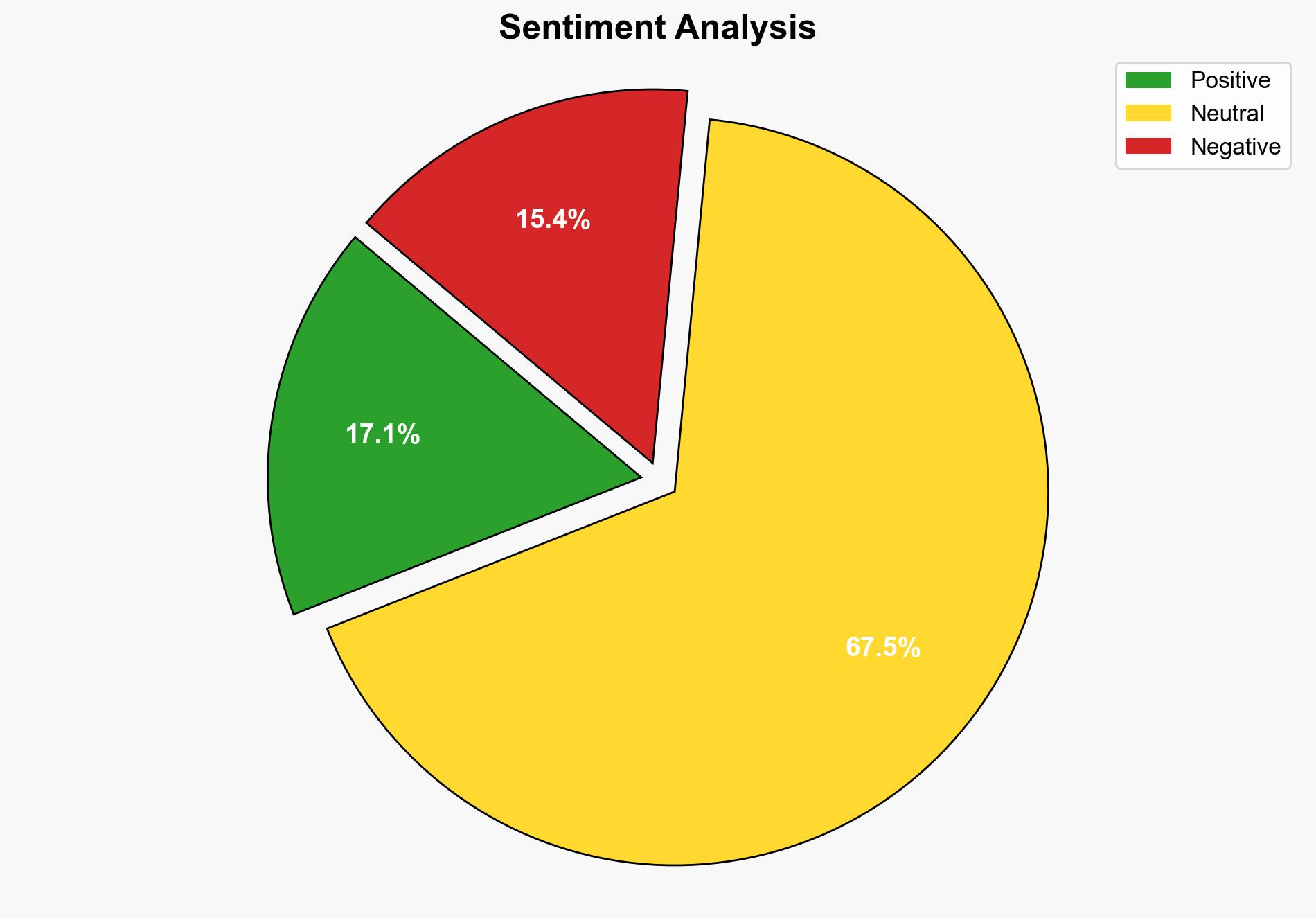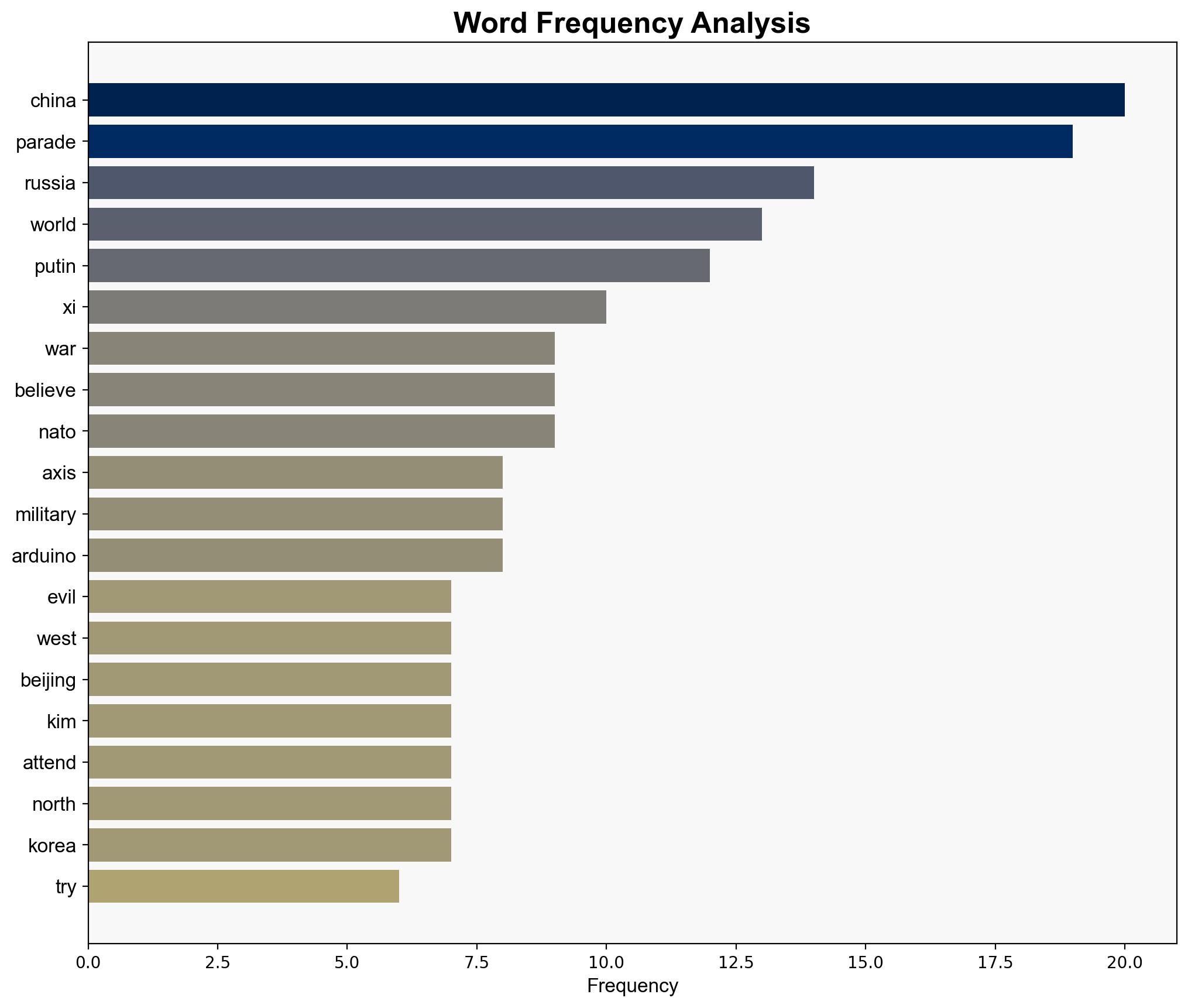Xi Putin and Kim meeting for first time – The-sun.com
Published on: 2025-09-02
Intelligence Report: Xi Putin and Kim meeting for first time – The-sun.com
1. BLUF (Bottom Line Up Front)
The meeting between Xi Jinping, Vladimir Putin, and Kim Jong Un, coupled with their participation in a military parade, suggests a potential strategic alignment aimed at counterbalancing Western influence. The most supported hypothesis is that this gathering is a demonstration of military and political solidarity, intended to project power and challenge Western dominance. Confidence level: Moderate. Recommended action: Increase intelligence monitoring of military movements and diplomatic engagements involving China, Russia, and North Korea.
2. Competing Hypotheses
1. **Hypothesis A**: The meeting and parade are primarily symbolic, intended to showcase unity and military prowess without immediate aggressive intentions. This hypothesis suggests the event is more about internal and external propaganda rather than a precursor to coordinated military action.
2. **Hypothesis B**: The meeting signals the formation of a strategic alliance with the potential for coordinated military or geopolitical actions against Western interests. This hypothesis posits that the parade and subsequent discussions are preparatory steps for a more aggressive stance.
Using ACH 2.0, Hypothesis B is better supported due to the explicit mention of forming a group to rival NATO and the historical context of military parades being used as a show of force.
3. Key Assumptions and Red Flags
– **Assumptions**: Both hypotheses assume that the leaders’ public actions reflect their private intentions. It is also assumed that the military parade is a direct message to Western powers.
– **Red Flags**: The absence of concrete evidence of a formal alliance or specific military plans. Potential bias in interpreting the parade as purely aggressive without considering domestic political motivations.
– **Deception Indicators**: The possibility that the parade is a diversion from other strategic moves or internal issues within the participating countries.
4. Implications and Strategic Risks
– **Geopolitical Risks**: Increased tensions between the East and West, potential for miscalculation leading to conflict, and the solidification of a rival bloc to NATO.
– **Economic Risks**: Potential sanctions or economic measures by Western countries in response to perceived aggression.
– **Cybersecurity Risks**: Increased likelihood of cyber operations targeting Western infrastructure as part of asymmetric warfare strategies.
– **Psychological Risks**: Heightened global anxiety and potential for domestic unrest in countries perceiving a direct threat.
5. Recommendations and Outlook
- Enhance intelligence sharing among Western allies to monitor developments closely.
- Engage in diplomatic efforts to de-escalate tensions and open communication channels with China, Russia, and North Korea.
- Scenario Projections:
- Best Case: The meeting results in no significant changes, serving mainly as a propaganda tool.
- Worst Case: Formation of a military alliance leading to increased regional conflicts or global tensions.
- Most Likely: Continued posturing without immediate aggressive actions, but increased diplomatic and military vigilance required.
6. Key Individuals and Entities
Xi Jinping, Vladimir Putin, Kim Jong Un, Dr. Alessandro Arduino, Hamish de Bretton-Gordon.
7. Thematic Tags
national security threats, geopolitical strategy, military alliances, regional focus





